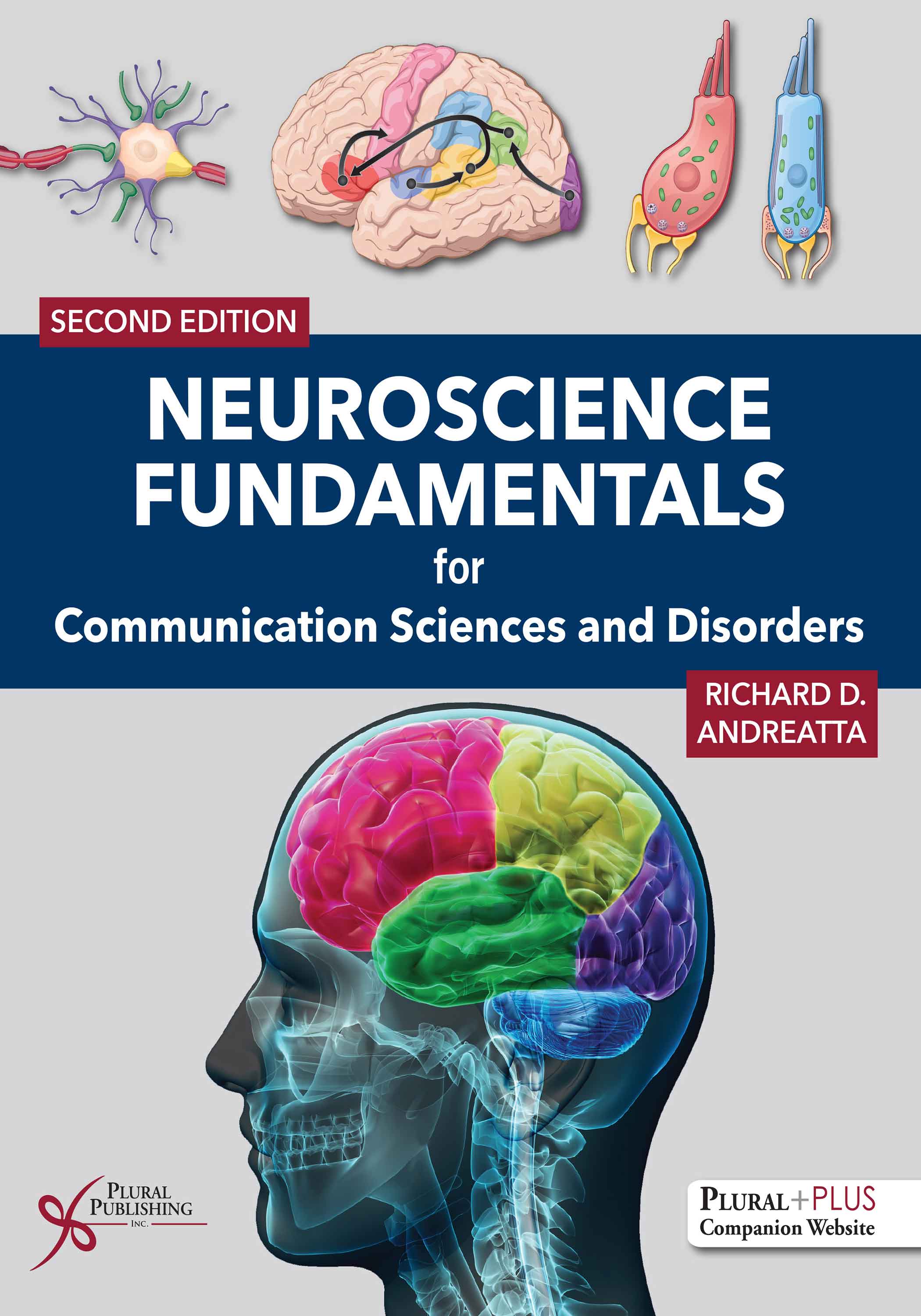
Neuroscience Fundamentals for Communication Sciences and Disorders
Second Edition
Richard D. Andreatta
Details: 802 pages, Full Color, Hardcover, 8.5" x 11"
ISBN13: 978-1-63550-359-3
© 2024 | Available
For Instructors
Purchase
Neuroscience Fundamentals for Communication Sciences and Disorders, Second Edition is a comprehensive textbook primarily designed for undergraduate neural bases or graduate neuroscience courses in communication sciences and disorders programs (CSD). The text can also be used as an accessible go-to reference for speech-language pathology and audiology clinical professionals practicing in medical and rehab settings. Written with an engaging and conversational style, the author uses humor and analogies to explain concepts that are often challenging for students. Complemented by more than 400 visually rich and beautifully drawn full-color illustrations, the book emphasizes brain and behavior relationships while also ensuring coverage of essential neuroanatomy and neurophysiology in an integrative fashion. With a comprehensive background in the principles, processes, and structures underlying the workings of the human nervous system, students and practitioners alike will be able to better understand and apply brain-behavior relationships to make appropriate clinical assessments and treatment decisions.
Extending well beyond traditional neuroanatomy-based textbooks, this resource is designed to satisfy three major goals:
- Provide neuroanatomical and neurophysiological detail that meets the real-world needs of the contemporary CSD student as they move forward toward clinical practice and into the future where advancements in the field of health and brain sciences are accelerating and contributing more and more each day to all areas of rehabilitation.
- Provide clear, understandable explanations and intuitive material that explains how and why neuroanatomical systems, processes, and mechanisms of the nervous system operate as they do during human behavior.
- Provide a depth and scope of material that will allow the reader to better understand and appreciate a wide range of evidence-based literature related to behavior, cognition, emotion, language, and sensory perception—areas that all directly impact treatment decisions.
New to the Second Edition
- 40 new full-color illustrations
- Reorganization and division of content from Chapters 4, 5, and 6 of the previous edition, into six new and more digestible chapters
- A new standalone chapter on the cranial nerves
- Addition of a major section and discussion on the neural bases of swallowing
- Addition of more summary tables and process flowcharts to simplify the text and provide ready-made study materials for students
- Revisions to most figures to improve their clarity and coherence with the written material
PluralPlus Online Ancillary Resources
For Instructors: PowerPoint Slides, Test bank, Sample Syllabus
For Students: eFlashcards, Unlabeled Anatomy Illustrations, Links to 3-D Brain Animations
Instructor Test Bank for LMS available via the Respondus Test Bank Network.
Praise for the First Edition
"This text is excellent. I love the analogies and descriptive illustrations to aid comprehension. I really appreciate having the option for unlabeled images. I put those on my class handouts to work on as we are learning new material. Best text I have ever used."
— Kelly Kleinhans, PhD, Associate Professor and Program Director, Master of Speech-Language Pathology, Austin Peay State University
"It is more in-depth than most, if not all, the books I have considered for teaching undergraduate neuroscience for Communication Sciences and Disorders majors. This book tackles a very difficult and dense subject using a mixture of strong, clear explanations and humor that will help students during their introduction to neuroscience. Neuroscience is often one of, if not the most daunting topics for our undergraduates, and this book makes it very digestible."
—Daniel Furnas, PhD, Assistant Professor, Communication Sciences and Disorders, Jacksonville University
"Andreatta has taken a different approach that is considerably less intimidating than other texts. The use of mild humor, analogies and the manner in which concepts are presented makes this an easy yet comprehensive read. It is probably the most comprehensive and student friendly text that I have seen written for undergraduate students."
—Carol Deakin, PhD, Associate Professor, Communication Sciences and Disorders, Alabama A&M University
"Humor throughout the text adds to the readability. Neuroscience can make for dry reading, but the humor makes it lighter. The manuscript is very thorough and covers a substantial number of topics. The chapter on the ear is excellent. ...It is much better than a comparable neuroscience for CSD text that I have used in the past."
—Jeremy J. Donai, AuD, PhD, Assistant Professor, Department of Communication Sciences and Disorders, West Virginia University
"The primary strength of this text is in its detail and organization. A very complete, well-written text. Its scope includes explanations of the mechanisms of the brain underlying basic and skilled actions from cellular functions, anatomic structures and physiologic processes of the nervous system. With a solid background in neuroscience, students will be able to better understand brain-behavior relationships in order to make appropriate clinical assessment and treatment decisions. The relatable examples, with a touch of humor, makes the text very readable. Students should be able to relate to all analogies and this prevents the reader from getting too bogged down in detail as they attempt to understand complex concepts."
—Janis M. Jarecki-Liu, PhD, Professor, Department of Communication Sciences and Disorders, Clarion University of Pennsylvania
"The author is very creative and the relatable, conversational style of this book is a definite strength. The author uses well placed, vivid analogies to explain concepts that can be quite challenging for students. The overall structure and organization of the book is also a strength as it uses a logical progression of the material."
—Irene M. Barrow, PhD, Professor, Department of Communication Sciences and Disorders, James Madison University
"As a student, I was intimidated by the complexity and grandeur of the nervous system. Dr. Andreatta's textbook, however, explained neuroscience in such an approachable and engaging manner. This textbook was truly a bright spot of a difficult semester, lighting a passion for neuroscience within me with fascinatingly clear food analogies and pockets of humor and empathetic notes throughout."
—Peace Lu, Struggling Student Who Ended Up Fascinated With Neuroscience
Review
“…The book targets several different audiences: senior undergraduate and graduate students in speech-language pathology, students in doctoral audiology programs, practicing clinicians, and faculty in Communication Sciences and Disorders (CSD), including those without neuroscience expertise. It is also accessible to those without any formal training in neuroscience. The book is organized, well-written, and illustrated in a way that faculty can use when teaching the neural bases of speech and language. The book serves as a useful guide to help lecturers build a course, create course content and/or materials, and design and develop lectures.
The book is divided into four sections, each with a list of corresponding chapters. This handy feature aids in conveying the four overarching topics of the book, and supports clinicians who wish to reference the book with a specific inquiry. To assist in learning and solidifying information, each chapter contains a "Top Ten" section that provides a thorough overview of the chapter's main points. The chapter covering the neural underpinnings necessary for speech includes several different modalities for effective learning: easy-to-read charts, engaging and amusing language, visual figures, and real-life situational examples of neurological involvement. This second edition book provides more full-color illustrations than the first edition, and includes more summary tables, flow charts, and revised visual figures…
This book is a worthy resource for any student or clinician requiring knowledge of neuroanatomy and neurophysiology. It covers the subject area in a comprehensive manner, allowing both students to acquire necessary groundwork knowledge and clinicians to reference the information in practice.”
– Melissa Raymond, M.S, Biola University, from Doody’s Reviews (May 2023)
Preface
About the Illustrator: Maury Aaseng
Contributors
Reviewers
Acknowledgments
Section 1. Neuroanatomical and Neurophysiological Foundations
Chapter 1. Introduction and Organization of Neuroscience Fundamentals in Communication Sciences and Disorders
Richard D. Andreatta
What Is Neuroscience?
What Is This Book About?
The View From 30,000 Feet Up
Overview of Section 1: Neuroanatomical and Neurophysiological Foundations
Overview of Section 2: Sensory Systems
Overview of Section 3: Motor Systems
Overview of Section 4: Neural Substrates of Speech, Language, and Hearing
Study Strategies and Tips
Closing Thoughts
Chapter 2. Basic Structure and Function of Neurons
Richard D. Andreatta
Introduction and Learning Objectives
Discovery of Two Classes of Cells in the Nervous System
The Neuron
Neurons Are Made for Signaling and Communication
Neurons Never Function Alone
Neurons Perform Fundamental Activities
Reflexes Provide a Window Into the Fundamental Operation of Neural Networks
Nerve Cells Have Different Shapes, Sizes, and Functions
Structural Features of the Neuron
Soma, Cell Membrane, and Cytoskeleton
Cytoplasm
Mitochondria
Smooth and Rough Endoplasmic Reticulum
Golgi Apparatus
The Nucleus Mediates the Process of Gene Expression
Axons and Dendrites
The Glial Cell
Glial Cells Are Divided Into Two Major Functional Groups
Conclusion
The Top Ten List
Chapter 2 Abbreviations
Study Questions and Activities
References
Chapter 3. Basics of Neural Signaling and Synaptic Function
Richard D. Andreatta
Introduction and Learning Objectives
Foundations of Neural Signaling: The Nature of Information in the Nervous System
Electronics 101
Gradients: Putting Substances Into Motion
Developing an Electrical Gradient
Voltage, Current, and Resistance
The Fluid Environment of the Neuron: Intracellular and Extracellular Composition
Ion Channels: Tunnels Across the Neuron’s Cell Membrane
Ion Channels Can Control the Motion of Ions
Ion Channels Can Gate Ionic Currents in Three Ways
Some Ion Channels Are Always Open
Ion Pumps Are Active Transporters of Ions Across the Neuron’s Cell Membrane
Understanding Membrane Potentials
Membrane Voltages Are Created by a Separation of Charges
Vm Can Be Changed by Ionic Gradients and Currents
Development of the Neuron’s Resting Membrane Potential
The Action Potential
Voltage-Gated Ion Channels Are Chiefly Responsible for AP Generation
Voltage-Gated Na+ and K+ Channels Differ in Their Opening Speed
The Action Potential in “Action”
Propagation of the Action Potential Down the Axon
Synapses: The Point of Communication Between Neurons
Electrical Synapses Allow For Virtually Instantaneous Signal Transmission
Chemical Synapses: The Workhorse of the Nervous System
Structure of the Chemical Synapse
Chemical Synapse Function: Transmission Phase
Chemical Synapse Function: Receptive Phase
Postsynaptic Receptors Belong to Two Different Functional Classes
Ending Chemical Synaptic Transmission: “Cleaning Up After the Party”
Neurotransmitters Can Be Divided Into a Handful of Chemical Classes
A Few Final Words on Neurotransmission
Neural Integration: Closing (and Opening) the Neural Signaling Loop
The “Government Analogy” of Neural Integration in the Postsynaptic Cell
Concluding Thoughts on Neurobiology
The Top Ten List
Chapter 3 Abbreviations
Study Questions and Activities
References
Chapter 4. Neuroanatomy of the Human Nervous System: Anatomical Nomenclature, Embryology, the Spinal Cord, and the Brainstem
Richard D. Andreatta
Introduction and Learning Objectives
Getting Around the Nervous System: Anatomical Planes and Orientations
Anatomical Orientations
Anatomical Planes
Gray Versus White Matter in the Nervous System
Gray Matter in the CNS and PNS
White Matter Consists of Bundles of Axons
A Brief Tour of the Embryologic Development of the Nervous System
The Human Embryo is a Multilayered Collection of Cells
Neural Crest and Neural Tube Cells Differentiate Into the PNS and CNS
Major Anatomical Structures and Functions of the Human Central Nervous System
The Skull and Vertebral Column House and Protect the Tissues of the CNS
The Spinal Cord
External Spinal Cord Structures
Internal Spinal Cord Structures: Gray Matter
Internal Spinal Cord Structures: White Matter
The Brainstem: An Overview
The Medulla
Medulla: External Features
Medulla: Internal Features
The Pons
Pons: External Features
Pons: Internal Features
The Mesencephalon
Mesencephalon: External Features
Mesencephalon: Internal Features
The Top Ten List
Chapter 4 Abbreviations
Study Questions and Activities
References
Chapter 5. Neuroanatomy of the Human Nervous System: Cranial Nerve Systems
Richard D. Andreatta
Introduction and Learning Objectives
Organization of the Cranial Nerves and Nuclei in the Brainstem
Functional Classifications of the Cranial Nerves
Motor: General Somatic Efferent (GSE)
Motor: Special Visceral Efferent (SVE)
Motor: General Visceral Efferent (GVE)
Sensory: General Somatic Afferent (GSA)
Sensory: General Visceral Afferent (GVA)
Sensory: Special Somatic Afferent (SSA)
Sensory: Special Visceral Afferent (SVA)
Cranial Nerves: Normal and Disordered Functions
CN I: Olfactory (SVA)
CN II: Optic (SSA)
CN III: Oculomotor (GSE and GVE)
CN IV: Trochlear (GSE)
CN V: Trigeminal (GSA and SVE)
CN VI: Abducens (GSE)
CN VII: Facial (SVE, GVE, SVA, GSA)
CN VIII: Auditory-Vestibular (SSA)
CN IX: Glossopharyngeal (SVE, GVE, GVA, SVA, GSA)
CN X: Vagus (SVE, GVE, GVA, SVA, GSA)
CN XI: Spinal Accessory (SVE)
CN XII: Hypoglossal (GSE)
The Top Ten List
Chapter 5 Abbreviations
Study Questions and Activities
References
Chapter 6. Neuroanatomy of the Human Nervous System: The Diencephalon, Cerebrum, and the Cerebral Cortex
Richard D. Andreatta
Introduction and Learning Objectives
The Diencephalon
The Thalamus: “Gatekeeper” of Ascending Information to the Cerebral Cortex
The Thalamus Is a Collection of Nuclei With Unique Inputs and Outputs
The Hypothalamus: “CEO” of the Body’s Homeostatic Regulatory Systems
The Hypothalamic-Pituitary Axis (HPA) Operates as a Feedback Control System
Hypothalamus Consists of Numerous Nuclei With Unique Operations
Hypothalamic Nuclei Participate in a Wide Range of Homeostatic Functions
The Cerebrum: The Center of Our Lives and Who We Are
The Lobes of the Cerebrum
The Frontal Lobe: The Cognitive and Motor Control Center of the Cerebrum
Frontal Lobe: Anatomical Features
Frontal Lobe: Functional Features
The Parietal Lobe: Multimodal Sensory Center of the Cerebrum
Parietal Lobe: Anatomical Features
Parietal Lobe: Functional Features
The Temporal Lobe: The “Can You Hear Me Now” and “What am I” Cerebral Region
Temporal Lobe: Anatomical Features
Temporal Lobe: Functional Features
The Occipital Lobe: The Visual Center of the Cerebrum
Occipital Lobe: Anatomical Features
Occipital Lobe: Functional Features
The Insula: Is It a Lobe or Not?
The Cerebral Cortex
Anatomical Features of the Cerebral Cortex
Organization of the Cerebral Cortex: Brodmann’s Areas and Cortical Columns
The Cortex Is Arranged to Support Serial and Parallel Processing of Information
The Cortex Is Organized to Support Cognition
Parietal Association Areas Mediate Visual Guidance, Spatial Awareness, and Attention
Temporal Association Areas Recognize Complex Objects
Phineas Gage and the Iron Spike: An Accidental Study of the Frontal Association Area
The Limbic System (Limbic Association Area): Emotional Center of the Brain
Hippocampal Formation Is Involved in Spatial Learning and Long-Term Memory
Hippocampal Formation Anatomy: Hippocampus, Dentate Gyrus, and Subiculum
Amygdala Mediates Threat, Anxiety, and Aggressive Behaviors
Anterior Cingulate Gyrus: At the Crossroads of Emotion and Cognition
Septal Area: Key Component of CNS’s Reward System
Interhemispheric Connectivity and Cerebral Dominance
The Top Ten List
Chapter 6 Abbreviations
Study Questions and Activities
References
Chapter 7. Neuroanatomy of the Human Nervous System: White Matter Tracts, Protective Infrastructure, and the Brain’s Blood Supply
Richard D. Andreatta
Introduction and Learning Objectives
Connectivity and White Matter Pathways of the CNS
Association Fibers Interconnect Areas Within a Hemisphere
Commissural Fibers Link Brain Regions Across the Midline
Projection Fibers Shuttle Information to and From the Brain
Protecting the CNS From Harm: The Meninges and the Ventricular System
The Meninges
The Ventricular System
The Vascular System of the Brain
Neurovascular Complex Is Divided Into Arterial and Venous Systems
Anterior Arterial System
Posterior Arterial System
Venous System Sinuses Drain Deoxygenated Blood Back to the Heart
Vascular Pathology Can Arise From Three General Situations
Aneurysms and Hemorrhagic Stroke
Ischemic Events
Arteriovenous Malformations
The Top Ten List
Chapter 7 Abbreviations
Study Questions and Activities
References
Section 2. Sensory Systems
Chapter 8. Basics Principles of Sensation and Perception
Richard D. Andreatta
Introduction and Learning Objectives
Sensation Versus Perception
Nervous Systems Are Far From Ideal to Sense and Perceive
Perception Requires Filtering, Selection, Inference, and Prediction
Sensations Are Processed by Sensory Systems
Quantifying Sensation and Perception
All Sensory Events Possess Four Basic Attributes Related to Perception
Modality: What Is the Stimulus?
Location: Where Is the Stimulus?
Intensity: How Strong Is the Stimulus?
Duration: How Long Does the Stimulus Last?
Sensation and Perception Are Actively Regulated by the CNS
The Top Ten List
Chapter 8 Abbreviations
Study Questions and Activities
References
Chapter 9. The Somatosensory System: Touch, Proprioception, Temperature, and Pain
Richard D. Andreatta
Introduction and Learning Objectives
The Somatosensory System: An Overview
The Peripheral Somatosensory Apparatus: Sensory Receptors and the Primary Afferent
Cutaneous Tactile Receptors of the Somatosensory System
Proprioception Sense Is Mediated by Sensory Endings in the Musculoskeletal System
Temperature Reception Depends on the Expression of Different Types of Ion Channels
Nociception and the Perceptual Response of Pain
Axon Features of the Primary Afferent That Transmits Inputs Centrally
Dermatomes and the Trigeminal Innervation Zones
Central Somatosensory Pathways
Dorsal-Column Medial Lemniscal System: Touch and Proprioception From the Body
Anterolateral System: Noxious and Temperature Sensation
Trigeminal System Manages All Forms of Somatosensation From the Face and Head
The Somatosensory Cortex
Structural and Functional Features of the Somatosensory Cortex
S1 Possesses Four Complete Cortical Body Representations
Speech-Related Activity of S1
Outputs From the Somatosensory Cortical Areas
Posterior Parietal Lobe Receives Inputs From Primary and 2nd Somatosensory Areas
Neuroplasticity: Changes to the Structure and Function of the Brain
Somatosensory Cortex Receives Diffuse Projections From the Thalamus
S1 Plasticity as a Function of Enriched Experiences
The Timing of Sensory Inputs Are Critical Factors in Changing Cortical Representations
Implication of the Neuroplasticity Literature to Rehabilitation
The Top Ten List
Chapter 9 Abbreviations
Study Questions and Activities
References
Chapter 10. Auditory-Vestibular System: Inner Ear Transduction Mechanisms for Sound and Balance
Richard D. Andreatta
Introduction and Learning Objectives
A Quick Summary of Acoustic Transduction in the Outer and Middle Ear
The Inner Ear and the Cochlea
Basilar Membrane Is a Frequency Analyzer
Organ of Corti Is the Chief Site for Transduction of Auditory Inputs
Hair Cell Structural and Functional Features
Stereocilia Are Key Elements for Signal Transduction in the Hair Cell
Mechanotransduction Mechanism for Acoustic Signals in the Cochlea
Stereocilia Shearing and Hair Cell Receptor Activation
Auditory Nerve Transmits HC Receptor Potential Changes to the Cochlear Nuclei
Auditory Nerve Firing Encodes Acoustic Intensity and Frequency
If the IHC Is the True Sensory Receptor, Why Do OHCs Exist?
The Vestibular System
Otolith Organs Transduce Linear Motion
Semicircular Canals Measure Angular Acceleration
Central Vestibular Pathway
Vestibulo-Ocular Response Is Critical for Keeping Your Eyes on the Target
The Top Ten List
Chapter 10 Abbreviations
Study Questions and Activities
References
Chapter 11. The Visual System
Richard D. Andreatta
Introduction and Learning Objectives
The Nature of Light in Our Environment
The Peripheral Visual Apparatus: Anatomical Overview of the Eye
Gross Anatomy of the Anterior Eye
Gross Anatomy of the Posterior Eye
Visual Fields
The Retina
Of Rods and Cones: Light Transduction in the Retina
Rods Mediate Vision During Dim and Nighttime Lighting
Cones Mediate Spatial Acuity and Color Vision in Bright Light Conditions
Phototransduction Mechanism
Photoreceptors Differentially Activate ON- or OFF-Bipolar Cells
Signal Integration and Convergence Through the Retinal Layers
Retinal Ganglion Cells Form the Beginning of Different Visual Processing Streams
The Central Visual Pathway
Retinal Ganglion Cell Axons Become the Fibers of the Optic Nerve, Chiasm, and Tract
Optic Tract Neurons Project Principally to the Lateral Geniculate Nucleus
The Primary Visual Cortex
Dorsal and Ventral Visual Streams
The Dorsal Visual Processing Stream
The Ventral Visual Processing Stream
Visual Field and Pathway Deficits
Noncortical Visual System Projections From the Retina
The Top Ten List
Chapter 11 Abbreviations
Study Questions and Activities
References
Chapter 12. The Chemical Senses: Olfactory and Gustatory Systems, and the Neural Substrate of Swallowing
Richard D. Andreatta and Nicole M. Etter
Introduction and Learning Objectives
Olfactory System: An Overview
Olfactory Receptors and the Transduction of Odorants
ORN Cilia Are Susceptible to Environmental Pollutants
Odorant Transduction Requires G-Coupled Receptors
Odorants Are Detected by Different Combinations of ORN Receptors
Olfactory Bulb Consists of Glomeruli
Olfactory Bulb Projection Neurons Target the Olfactory Cortex
Gustatory System: An Overview
Gustatory Receptors and Transduction
Distribution of Taste Sensitivity Across the Surface of the Tongue
Taste Buds Consist of Collections of Taste Receptor Cells
Tastant Transduction Process
Salty and Sour Tastants Are Transduced by Ion Channels
Sweet, Bitter, and Umami Transduction Uses G-Coupled Protein Receptors
Central Gustatory Pathway
Central Representation of Taste
Dysfunction in the Chemical Senses
Chemosensory Changes Associated With Typical Aging
Chemosensory Changes Associated With Surgical Intervention
Chemosensory Changes Associated With Injury or Disease
The Neural Substrate of Normal Feeding and Swallowing
The Aerodigestive Tract Supports Different Modes of Behavior
Brief Overview of the Process for Feeding and Swallowing
Oral Preparatory and Oral Transport Phases of Swallowing
Pharyngeal and Esophageal Phases of Swallowing
Neural Elements Participating in the Process of Swallowing
Olfactory Nerve Contribution
Trigeminal Nerve Contribution
Facial Nerve Contribution
Glossopharyngeal Nerve Contribution
Vagus Nerve Contribution
Hypoglossal Nerve Contribution
Spinal Nerve Contribution
Brainstem Respiratory Centers Are Voluntarily Modulated During Swallowing
Cortical and Subcortical Control of Swallowing
Control and Function of the Swallowing Central Pattern Generator
The Top Ten List
Chapter 12 Abbreviations
Study Questions and Activities
References
Section 3. Motor Systems
Chapter 13. Muscle Tissue: Structure, Mechanisms of Contraction, and the Motor Unit
Richard D. Andreatta and Timothy Butterfield
Introduction and Learning Objectives
Types of Muscle Tissue
Hierarchical Organization of Skeletal Muscle Tissue: From Bundle to Fiber
The Muscle Fiber (Cell)
Internal Structure of the Muscle Fiber
Organization and Structure of the Myofibril
Myofibrils Are Serial Collections of Sarcomeres
Molecular Subcomponents of the Sarcomere
Structure and Function of Myosin
The Function of Actin and Accessory Proteins in the Sarcomere
Titin: A Giant Among Proteins
Neuromuscular Junction Mediates the Neural Signal That Starts Muscle Contraction
Contraction Physiology: Excitation-Coupling in the Muscle Fiber
Contraction Physiology: Cross-Bridge Formation
Length-Tension Relationship of Muscle Tissue
Investigating the Contraction Properties of Muscle Tissue
Muscle Forces Increase With Firing Rate of the Lower Motoneuron
Skeletal Muscle Fiber Types
The Motor Unit
Size Principle of Motor Unit Recruitment
Regulation of Skeletal Muscle Contraction: Alpha-Gamma Coactivation
The Top Ten List
Chapter 13 Abbreviations
Study Questions and Activities
References
Chapter 14. Motor Control Systems of the CNS
Richard D. Andreatta
Introduction and Learning Objectives
Neuromotor Control Elements of the CNS: Direct Versus Indirect Systems
Descending Tracts of the Direct Motor Control System
Descending Motor Pathways From the Cerebrum: Corticospinal and Corticobulbar Tracts
Anatomical Course of the Corticospinal and Corticobulbar Pathways
Corticospinal Tract: Course and Function
Corticobulbar Tract: Course and Function
The Curious Case of UMN Versus LMN Facial Palsy
Descending Motor Pathways Originating From the Brainstem
Rubrospinal Tract
Vestibulospinal Tract
Reticulospinal Tract
Tectospinal Tract
Cerebral Motor Area Underlying Voluntary Control
Organization and Functional Mapping of M1
Discovery of the Inner Workings of M1
Different Neuron Firing Patterns in M1
M1 Uses Population Codes to Generate Higher-Order Performance Features of an Action
Sensory Inputs to M1 Provide Real-Time Information About Body’s Current State
Developing a Broader Understanding of Action and Behavioral Performance
The Premotor Cortex
PMA Activity Is Strongly Associated With Upper Limb and Hand Action
Supplementary Motor Area Activity Is a Necessary Element for Speech Motor Control
The Cingulate Motor Map Links Action to Emotion
Neuroplasticity in Motor Maps of the Cortex
Deficits in Motor Control Can Result From Damage to Upper or Lower Motoneurons
Indirect Motor Control Systems
Basal Ganglia is a Selector of Movement
The Caudate and Putamen and Their Connections
Globus Pallidus and Its Connections
Subthalamic Nucleus and Its Connections
Substantia Nigra and Its Connections
Schematic Organization and Functional Overview of the BG Nuclei
The Direct and Indirect Pathways of the Basal Ganglia
Direct Pathway Operation in the BG
Indirect Pathway Operation in the BG
Role of the SNpc in the BG
Lesions to the Basal Ganglia Can Produce Hypo- or Hyperkinetic Deficits
Hypokinetic Disorders of the BG Are Related to Indirect Pathway Influence
Hyperkinetic Disorders of the BG Are Related to Direct Pathway Overactivity
Complexity of Basal Ganglia Interconnections Complicates the Simple Correlation Between Structure, Lesion and Behavioral Effects
Cerebellum Operates to Coordinate and Refine Movements
External and Internal Anatomical Features of the Cerebellum
Functional Divisions of the Cerebellum and Their Input/Output Pathways
Functional Cerebellar Areas Form Processing Circuits
Vestibulocerebellar Circuit
Spinocerebellar Circuit
Cerebrocerebellar Circuit
Consequences of Cerebellar Lesion Reveals the Operation of the System
The Autonomic Nervous System is the Motor Control System for Homeostasis
Pathway Organization of the Sympathetic System
Pathway Organization of the Parasympathetic System
The Top Ten List
Chapter 14 Abbreviations
Study Questions and Activities
References
Chapter 15. Introduction to Motor Learning and Control Principles of Behavior
Patrick O. McKeon and Richard D. Andreatta
Introduction and Learning Objectives
The Understanding of Motor Control Began With an Idea
What Exactly Is Motor Control?
From Perception to Action
Foundations of Motor Control Theory
Two Systems of Motor Control: Open-Loop Systems
Two Systems of Motor Control: Closed-Loop Systems
The Importance of Reflexes in Motor Control: Insights by Sir Charles Sherrington
Nikolai Bernstein: A Russian Revolutionary Figure in Motor Control
Bernstein’s Problem and Motor Equivalence
From Bernstein to Current Motor Control Theories
The General Motor Program Theory
The Dynamic Systems Theory of Motor Control
Contrasting Motor Program Theory and Dynamic Systems Theory
Perception and Action Are Coupled According to Dynamic Systems Theory
The Dynamics of Motor Skill Acquisition
An Example of Sensorimotor Skill Acquisition: Learning to Dance
Concluding Thoughts on Motor Control Theory
The Top Ten List
Chapter 15 Abbreviations
Study Questions and Activities
References
Section 4. Neural Substrates of Speech, Language, and Hearing
Chapter 16. Neural Substrate of Speech and Voice
Stephen M. Tasko
Introduction and Learning Objectives
Speech and Vocalization Are Complex Behaviors
Neural Substrates of Speech and Vocalization: How Do We Know What We Know?
Peripheral Nerves Involved in Speech and Vocalization
Efferent Pathways
Respiratory Subsystem
Phonatory Subsystem
Velopharyngeal Subsystem
Oral Articulatory Subsystem
Descending Pathways Onto Speech Motor Neuron Pools
Afferent Pathways
Subcortical Structures Involved in Vocalization
Reticular Formation
Periaqueductal Gray Matter
Thalamus (Ventrobasal Complex)
Basal Ganglia
Cerebellum
Cortical Bases of Speech Motor Control and Vocalization
Primary Motor and Somatosensory Cortices
Inferior Frontal Gyrus (Broca’s Area)
Supplementary Motor Areas
Anterior Cingulate Cortex
Supramarginal Gyrus
Insula
Neural Basis of Auditory Processing and Perception of Speech
Sensorimotor Adaptation During Speech Production
Putting it All Together: Computational Models of Speech Production
The Directions Into Velocities of Articulators Model (DIVA)
DIVA - Feedfoward and Feedback Control System Operation
The Development and Refinement of Speech Motor Abilities
Selected Neurological Disorders of Speech and Vocalization
Aphasias
Motor Speech Disorders: Dysarthrias
Other Speech Production Deficits
The Top Ten List
Chapter 16 Abbreviations
Study Questions and Activities
References
Chapter 17. Neural Substrate of Language
Jessica D. Richardson and Sarah Grace H. Dalton
Introduction and Learning Objectives
Language: What Is it Really?
Neuroscience and Language Acquisition
Neuroscience and Language Evolution
Brain Areas Involved in Language Processing
Models of Language Production
The “Classic” Language Model: Wernicke-Geschwind Model
Dual Path Models of Language Processing
Models of Communication, Language Evolution, and Development
Neurological Factors and Correlated Features of Language Disorders
Aphasias
Dementia
Traumatic Brain Injuries
Right Hemisphere
Harnessing the Ability of the Brain to Change for Language Rehabilitation
Neuroplasticity and Constraint-Induced Therapy Approaches
The Original Idea: Constraint-Induced Movement Therapy
Constraint-Induced Language Therapy
Neural Substrate of Language Recovery Following Stroke
Parting Thoughts on the Neurorehabilitation of Language
The Top Ten List
Chapter 17 Abbreviations
Study Questions and Activities
References
Chapter 18. Neural Substrate of Hearing: Central Auditory Pathway and the Auditory Cortices
Anne D. Olson
Introduction and Learning Objectives
Central Auditory Pathway Supports Auditory Skills We Use Daily
An Analogy: The CAP as a Highway System
The Central Auditory Pathway
Cochlear Nucleus (CN): Anatomy and Physiology
CN Cell Types, Responses, and Function
Frequency Preservation in the CN
Temporal Preservation in the CN
Intensity Preservation in the CN
Superior Olivary Complex: Anatomy and Physiology
Low-Frequency Sound Localization Is Processed in the MSOC
High-Frequency Sound Localization Requires Action of the LSOC and MNTB
SOC Allows for the Integration of Sounds From Both Ears
Lateral Lemniscus: Anatomy and Physiology
Inferior Colliculus: Anatomy and Physiology
Medial Geniculate Body: Anatomy and Physiology
Auditory Cortical Areas
The Primary Auditory Cortex
Deeper Insights Into the Properties of the Primary Auditory Cortex
Role of the Auditory Cortex in Speech and Vocalization
The Secondary Auditory Cortex
The Auditory Association Areas
Neuroimaging of the Human Auditory Cortex Reveals Distinct Features
Surprise! The Auditory System Has Efferent Pathways
Stapedial Reflex Response is Mediated Through the SOC
Function of the Olivocochlear Bundle
The Auditory Brainstem Response
Conclusion
The Top Ten List
Chapter 18 Abbreviations
Study Questions and Activities
References
Glossary
Index
Neuroscience Fundamentals for Communication Sciences and Disorders, Second Edition comes with access to supplementary student and instructor resources on a PluralPlus companion website.
The companion website is located at: https://www.pluralpublishing.com/publication/nfcsd2e
STUDENTS:
The student resources include Flash Cards and Unlabeled Anatomy Illustrations.
To access the student resources, you must register on the companion website and log in using the access code located in the front of your textbook.
INSTRUCTORS:
The instructor resources include PowerPoint Lecture Slides, Chapter Exams, a Test Bank, and Course Syllabus. You will also have access to all of the student resources listed above.
To access the instructor resources, you must contact Plural Publishing, Inc. to be verified as an instructor and receive your access code.
Email: instructormaterials@pluralpublishing.com
Tel: 866-758-7251 (toll free) or 858-492-1555
*Note for students: If you have purchased this textbook used or have rented it, your access code will not work if it was already redeemed by the original buyer of the book. Plural Publishing does not offer replacement access codes for used or rented textbooks.
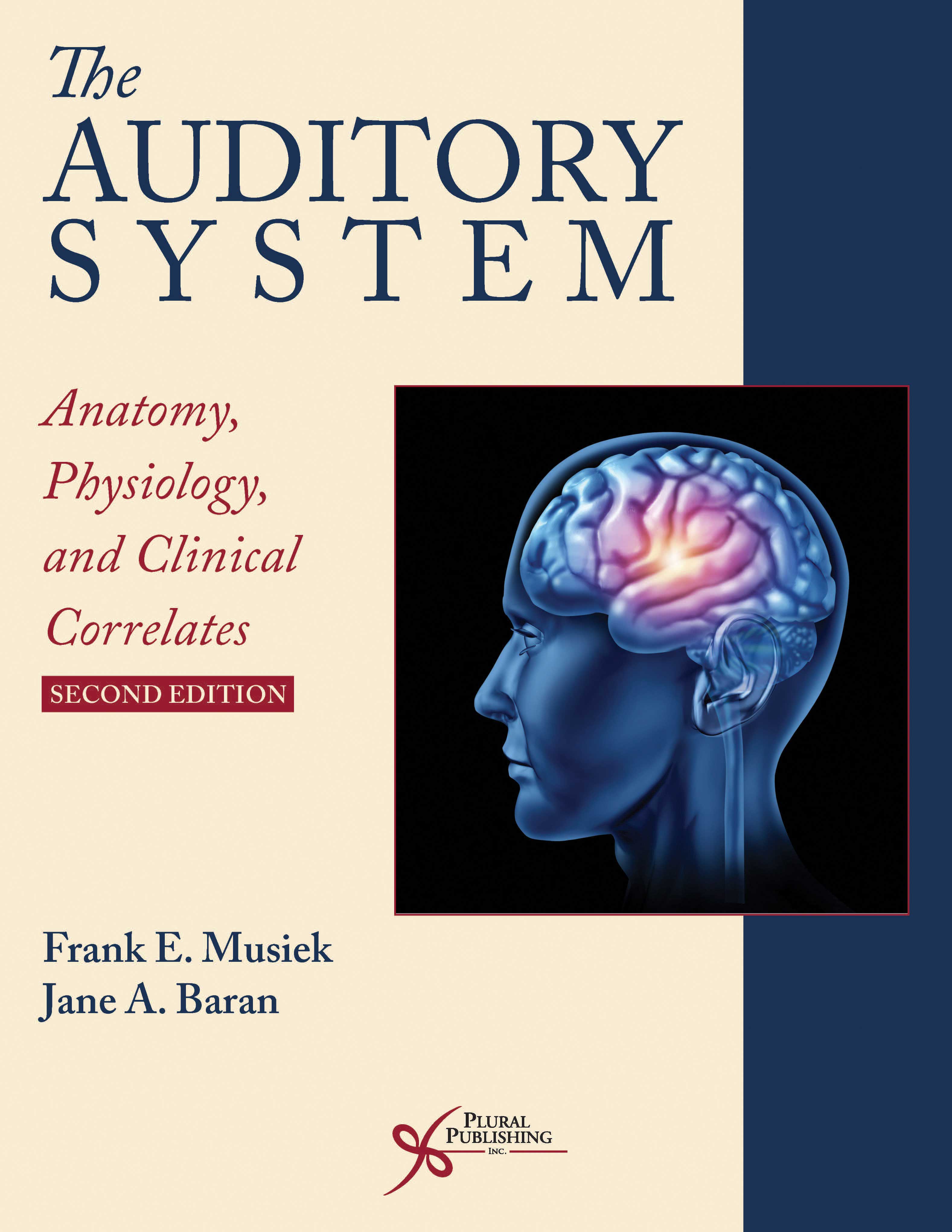
The Auditory System: Anatomy, Physiology, and Clinical Correlates
Second Edition
Frank E. Musiek, Jane A. Baran
Details: 487 pages, Full Color, Hardcover, 8.5" x 11"
ISBN13: 978-1-94488-300-3
© 2020 | Available
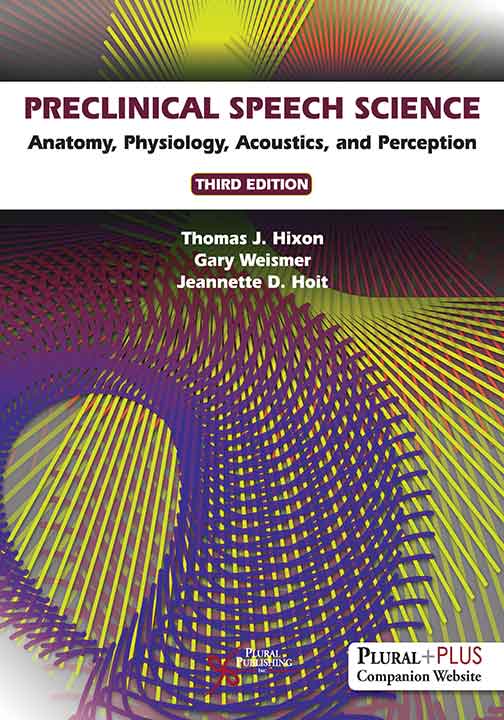
Preclinical Speech Science: Anatomy, Physiology, Acoustics, and Perception
Third Edition
Thomas J. Hixon, Gary Weismer, Jeannette D. Hoit
Details: 728 pages, Full Color, Hardcover, 8.5" x 11"
ISBN13: 978-1-63550-061-5
© 2020 | Available
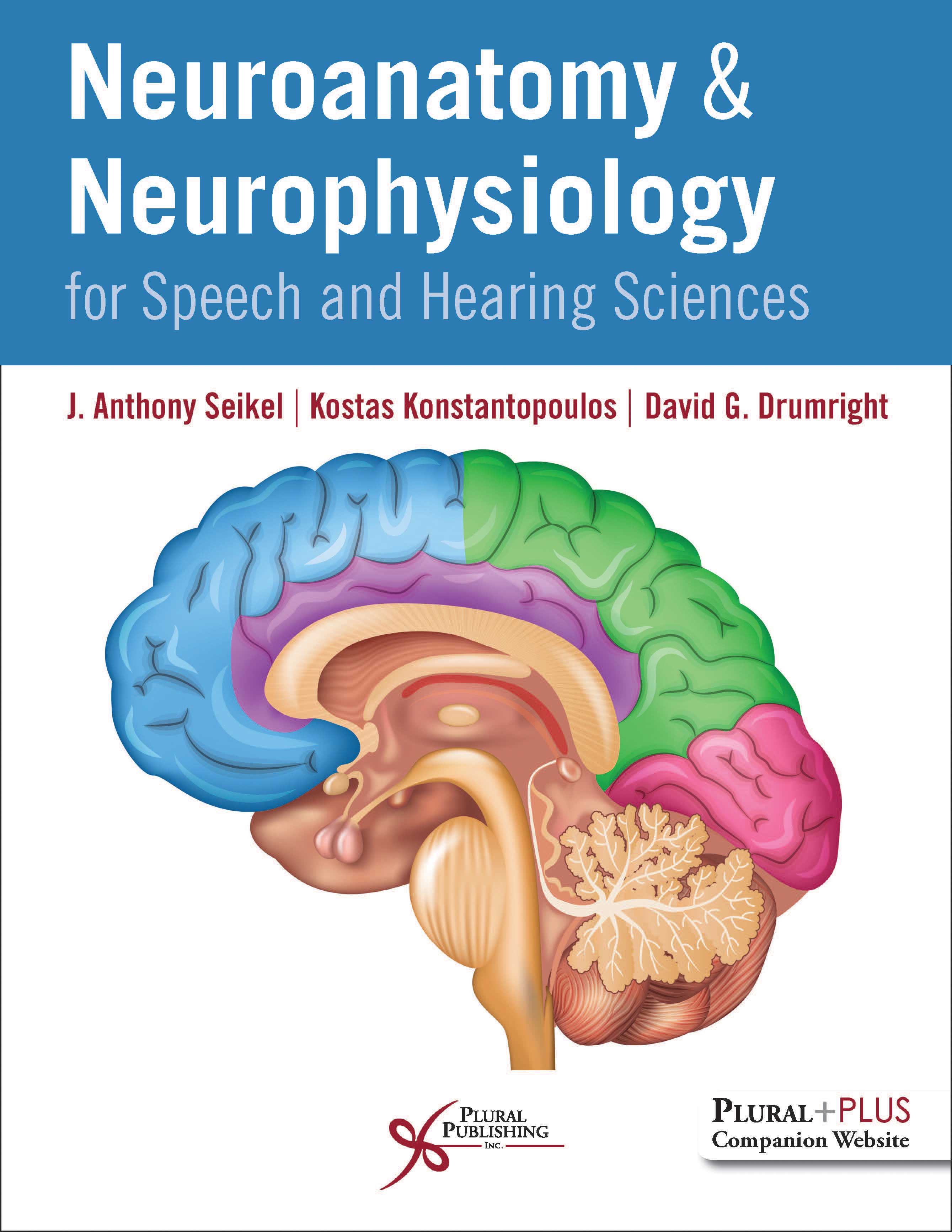
Neuroanatomy and Neurophysiology for Speech and Hearing Sciences.
First Edition
J. Anthony Seikel, Kostas Konstantopoulos, David G. Drumright
Details: 385 pages, Full Color, Hardcover, 8.5" x 11"
ISBN13: 978-1-63550-071-4
© 2020 | Available
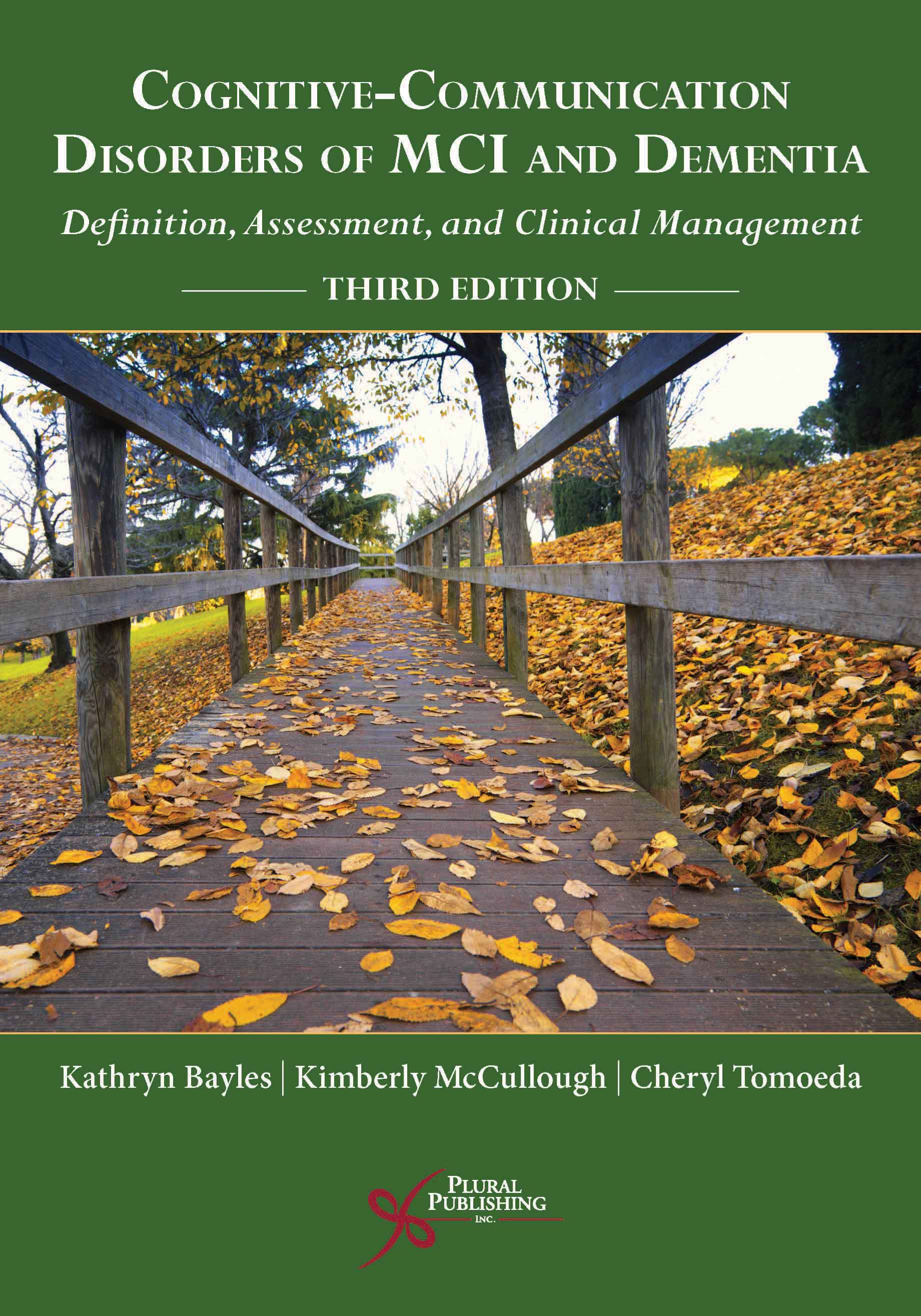
Cognitive-Communication Disorders of MCI and Dementia: Definition, Assessment, and Clinical Management
Third Edition
Kathryn Bayles, Kimberly McCullough, Cheryl K. Tomoeda
Details: 265 pages, B&W, Softcover, 7" x 10"
ISBN13: 978-1-63550-060-8
© 2020 | Available
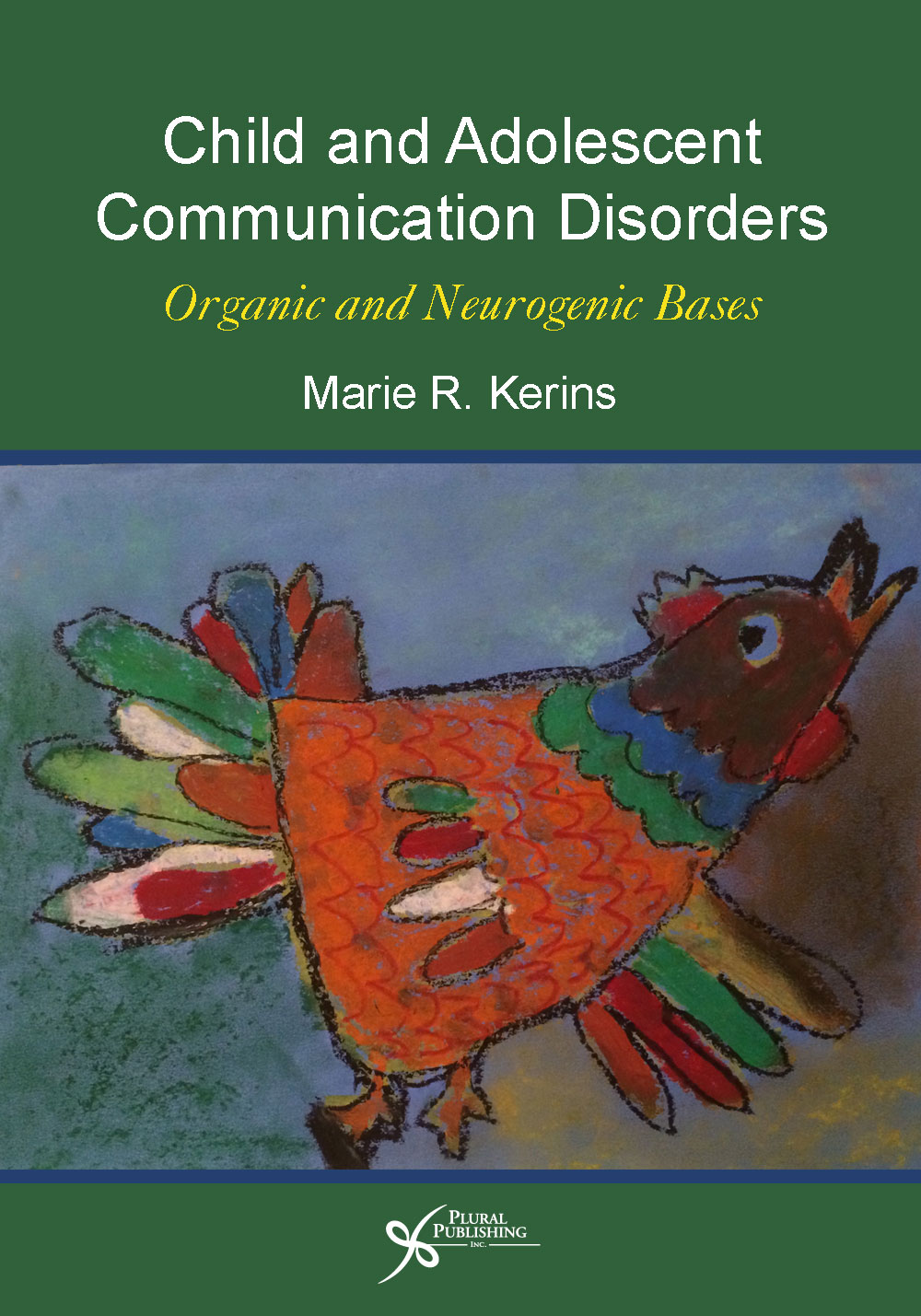
Child and Adolescent Communication Disorders: Organic and Neurogenic Bases
First Edition
Marie R. Kerins
Details: 472 pages, B&W, Softcover, 7" x 10"
ISBN13: 978-1-59756-656-8
© 2015 | Available
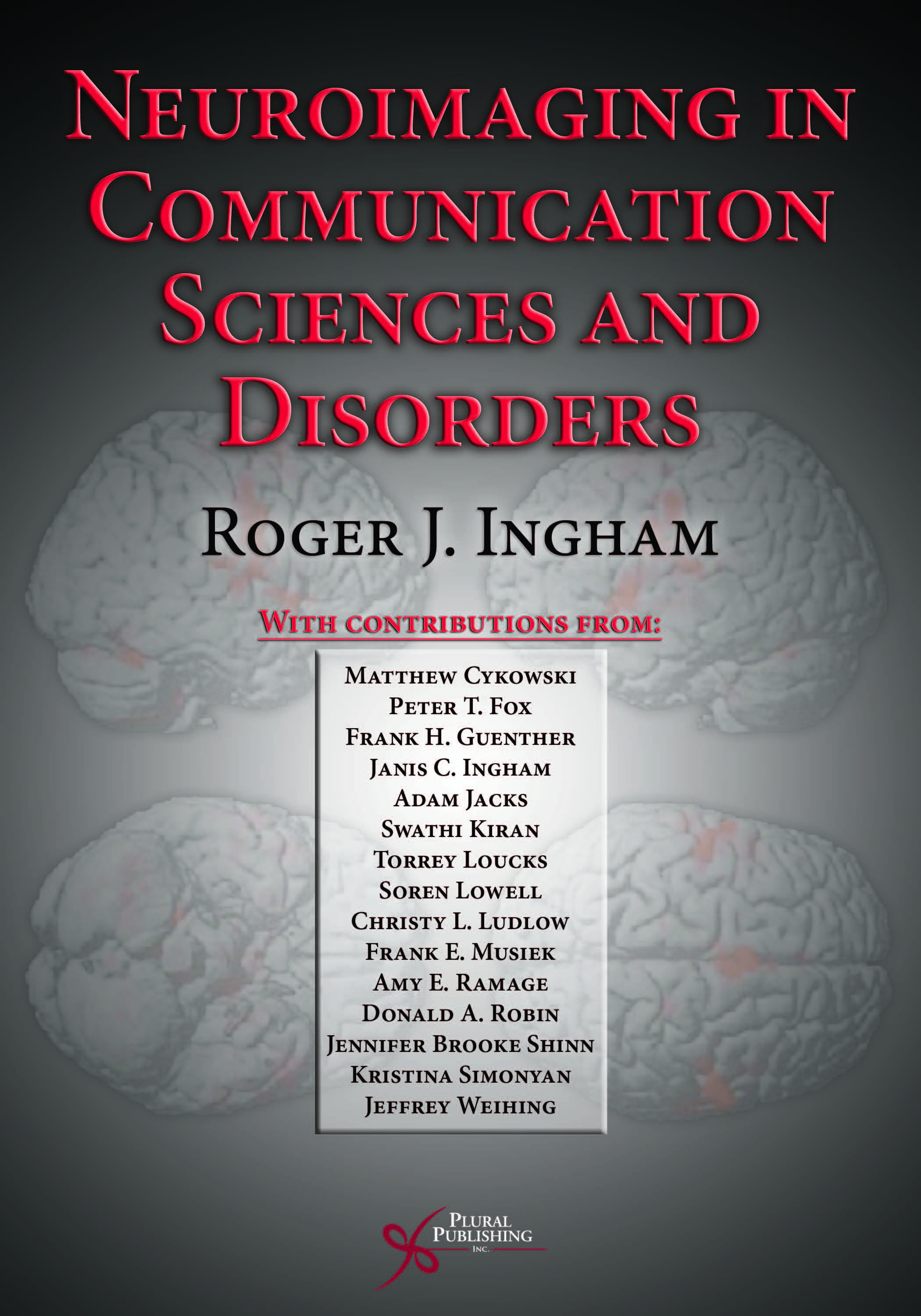
Neuroimaging in Communication Sciences and Disorders
First Edition
Roger J. Ingham
Details: 243 pages, Full Color, Hardcover, 8.5" x 11"
ISBN13: 978-1-59756-102-0
© 2008 | Available
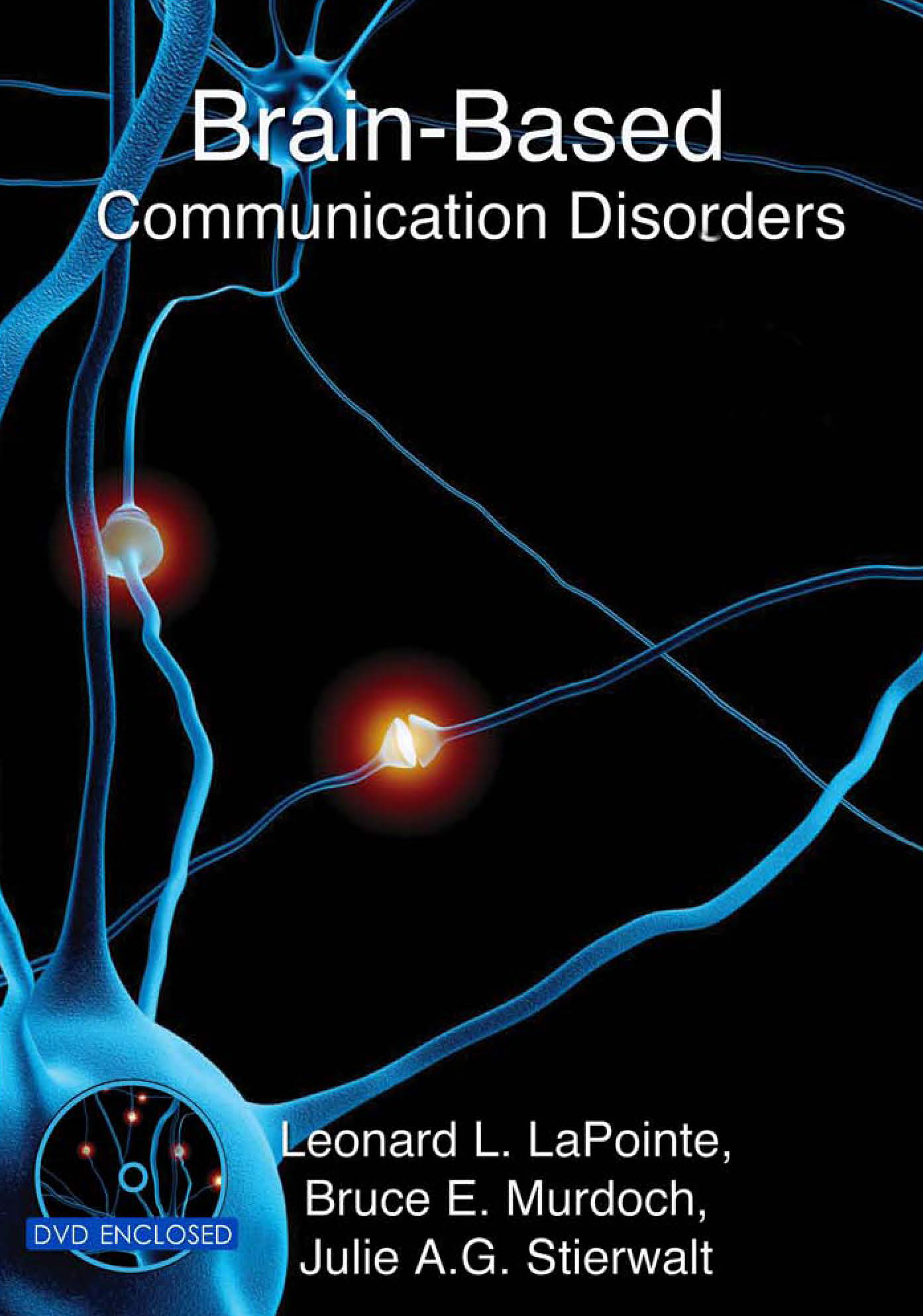
Brain-Based Communication Disorders
First Edition
Leonard L. LaPointe, Bruce E. Murdoch, Julie A. G. Stierwalt
Details: 265 pages, Full Color, eBook
ISBN13: 978-1-59756-704-6
© 2011 | Available
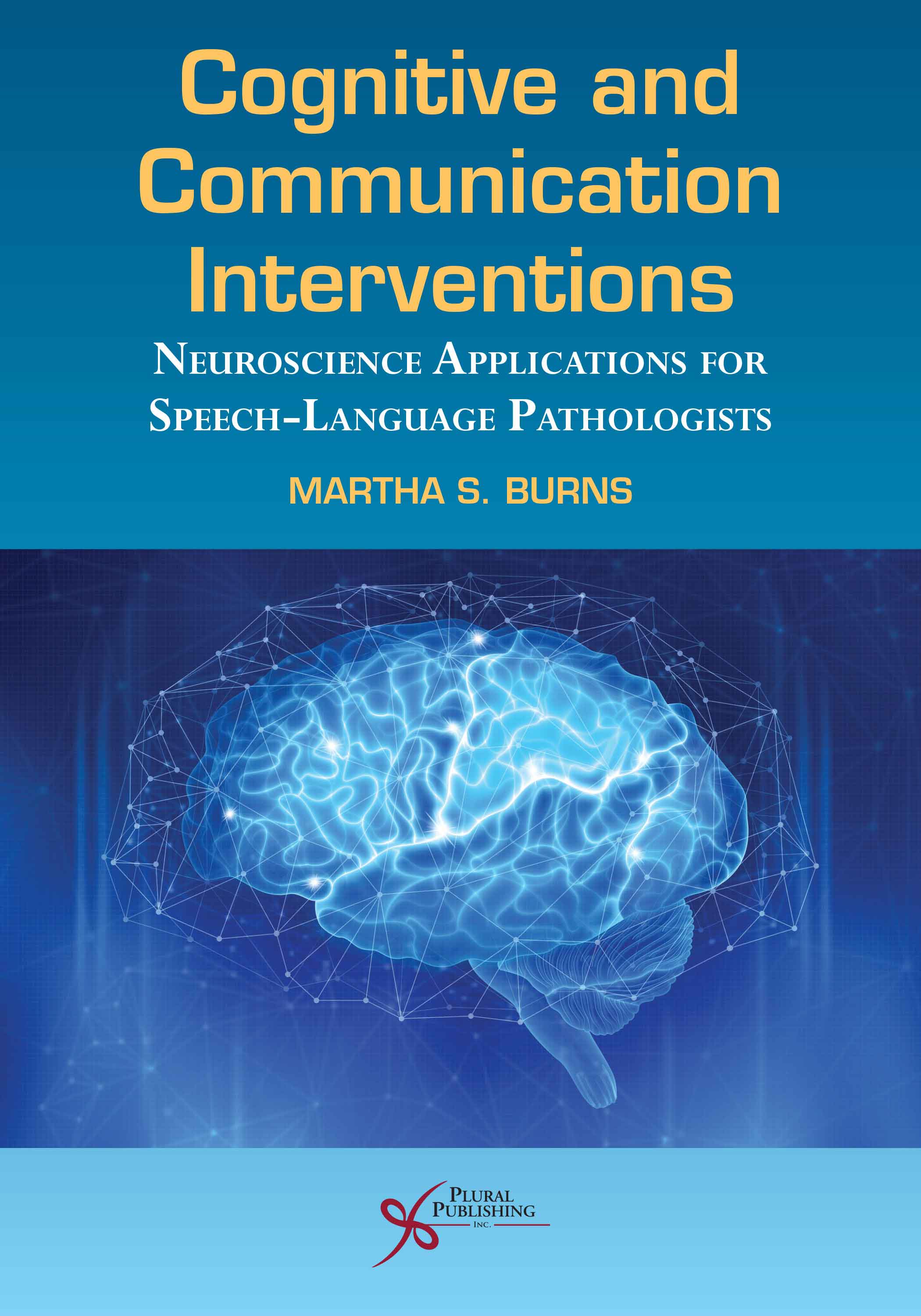
Cognitive and Communication Interventions: Neuroscience Applications for Speech-Language Pathologists
First Edition
Martha S. Burns
Details: 318 pages, B&W, Softcover, 7" x 10"
ISBN13: 978-1-63550-292-3
© 2021 | Available
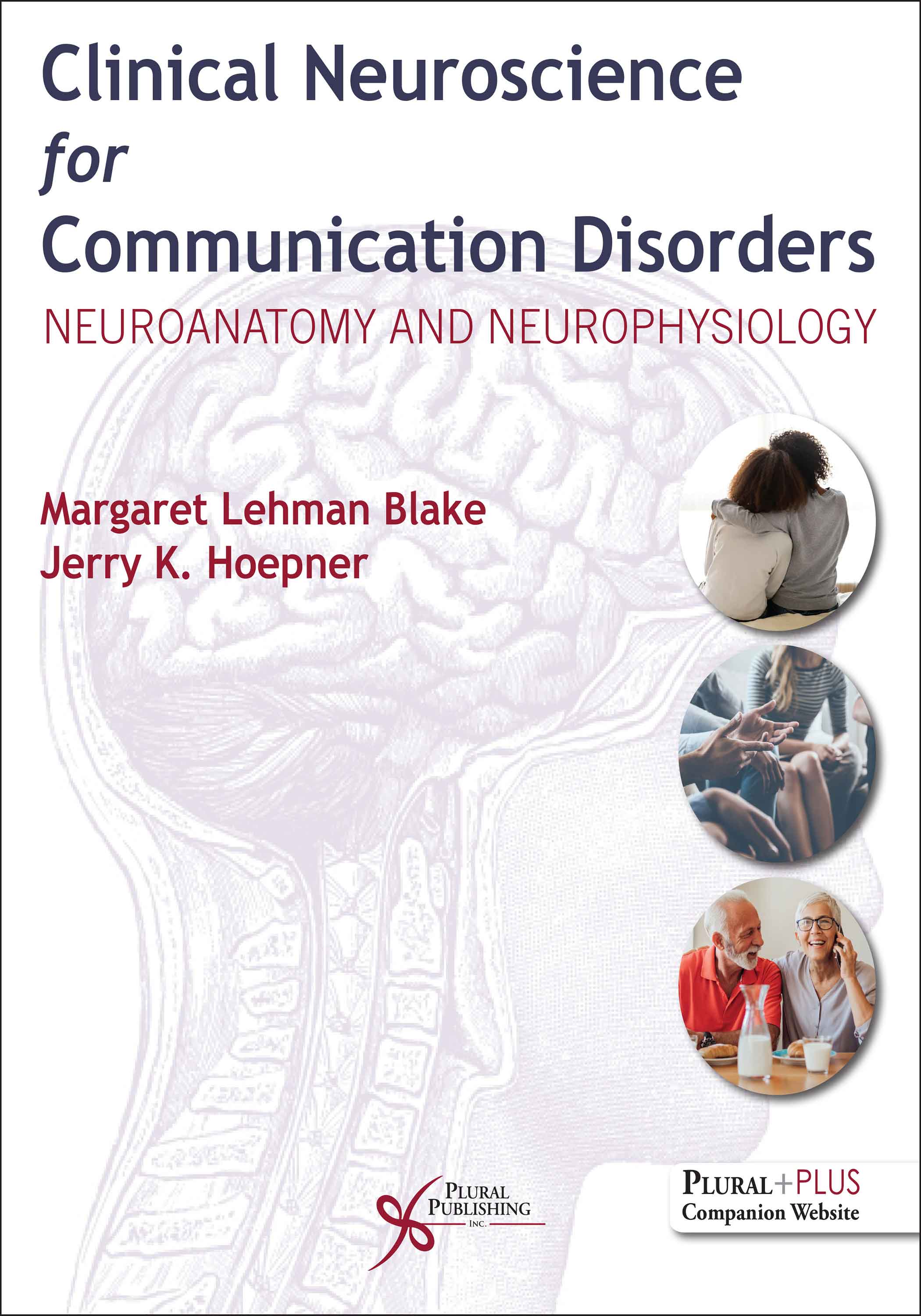
Clinical Neuroscience for Communication Disorders: Neuroanatomy and Neurophysiology.
First Edition
Margaret Lehman Blake, Jerry K. Hoepner
Details: 340 pages, Full Color, Hardcover, 8.5" x 11"
ISBN13: 978-1-63550-365-4
© 2023 | Available
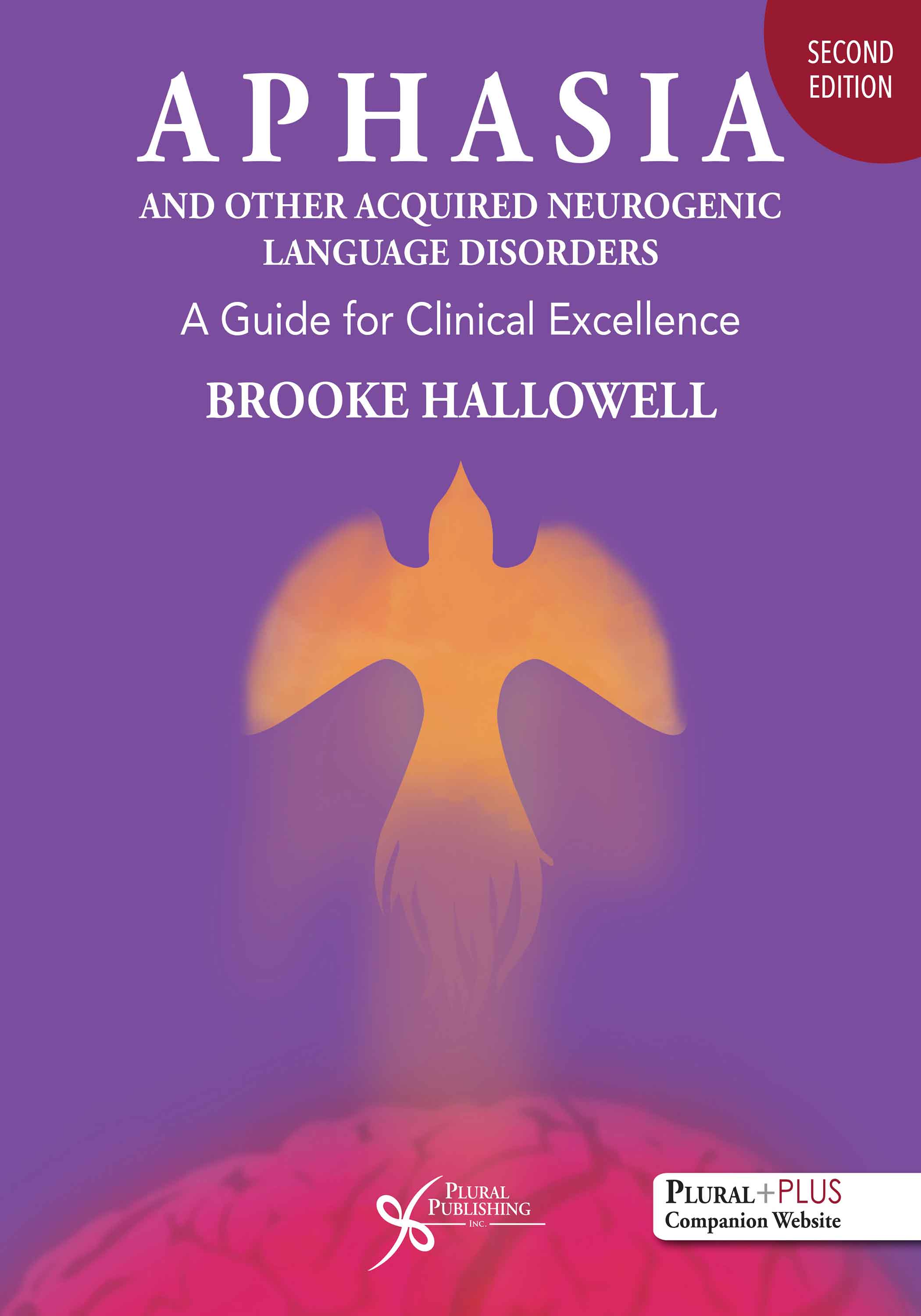
Aphasia and Other Acquired Neurogenic Language Disorders: A Guide for Clinical Excellence
Second Edition
Brooke Hallowell
Details: 629 pages, 2-Color with Full-Color Insert, Softcover, 8.5" x 11"
ISBN13: 978-1-63550-159-9
© 2023 | Available
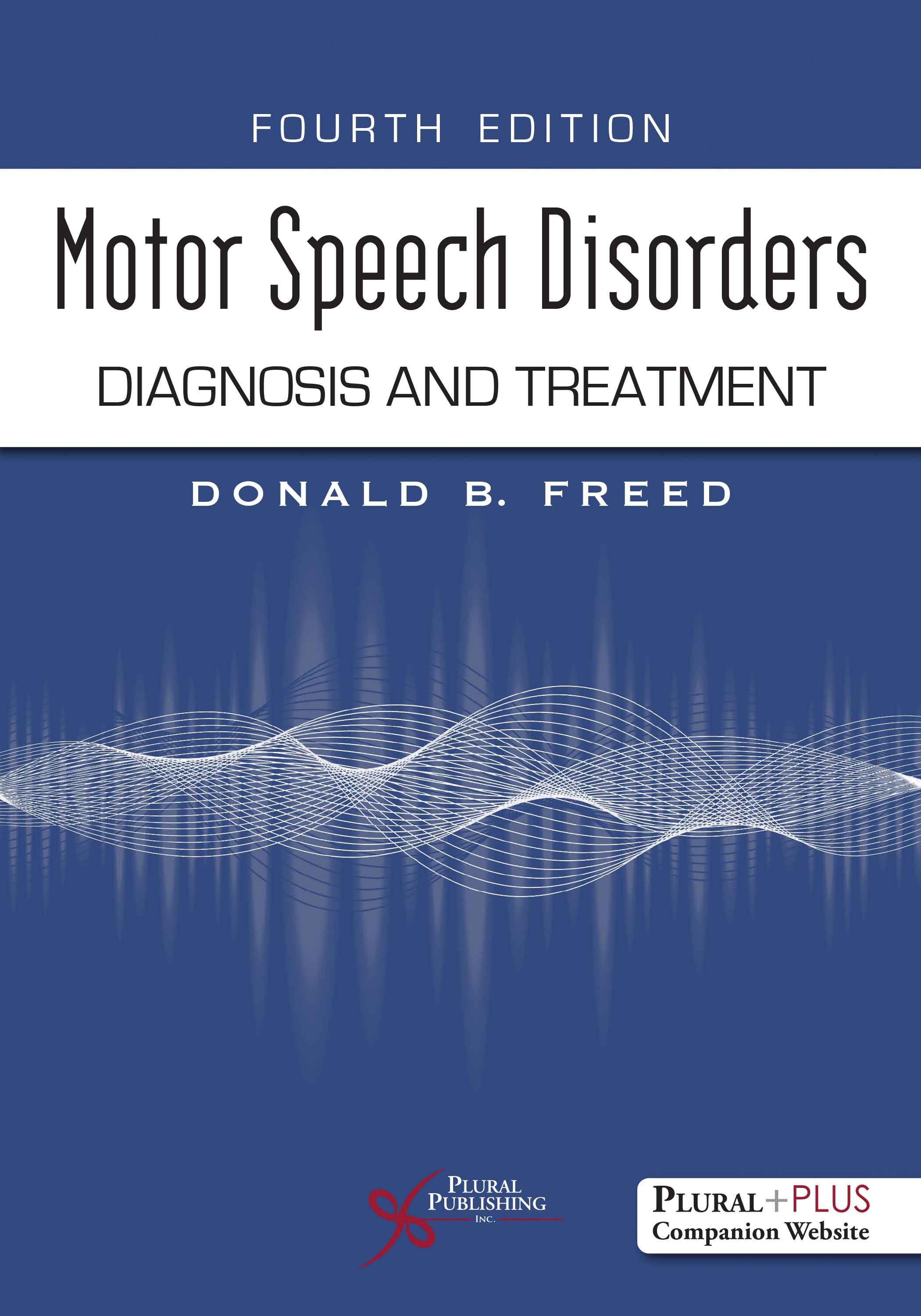
Motor Speech Disorders: Diagnosis and Treatment
Fourth Edition
Donald B. Freed
Details: 381 pages, Full Color, Soft Cover, 7" x 10"
ISBN13: 978-1-63550-607-5
© 2025 | Available
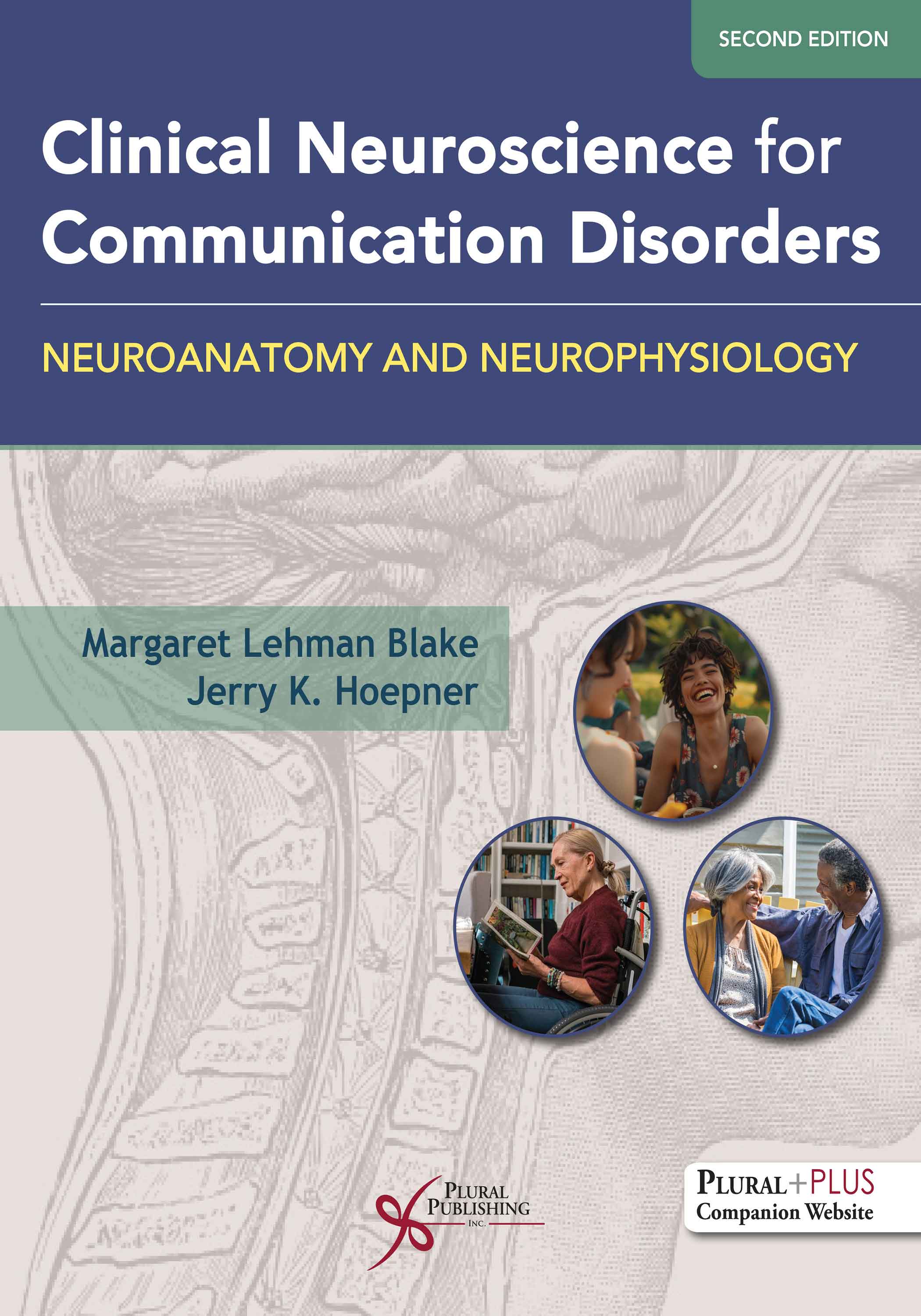
Clinical Neuroscience for Communication Disorders: Neuroanatomy and Neurophysiology
Second Edition
Margaret Lehman Blake, Jerry K. Hoepner
Details: 384 pages, Full Color, Hardcover, 8.5" x 11"
ISBN13: 978-1-63550-781-2
© 2027 | Available
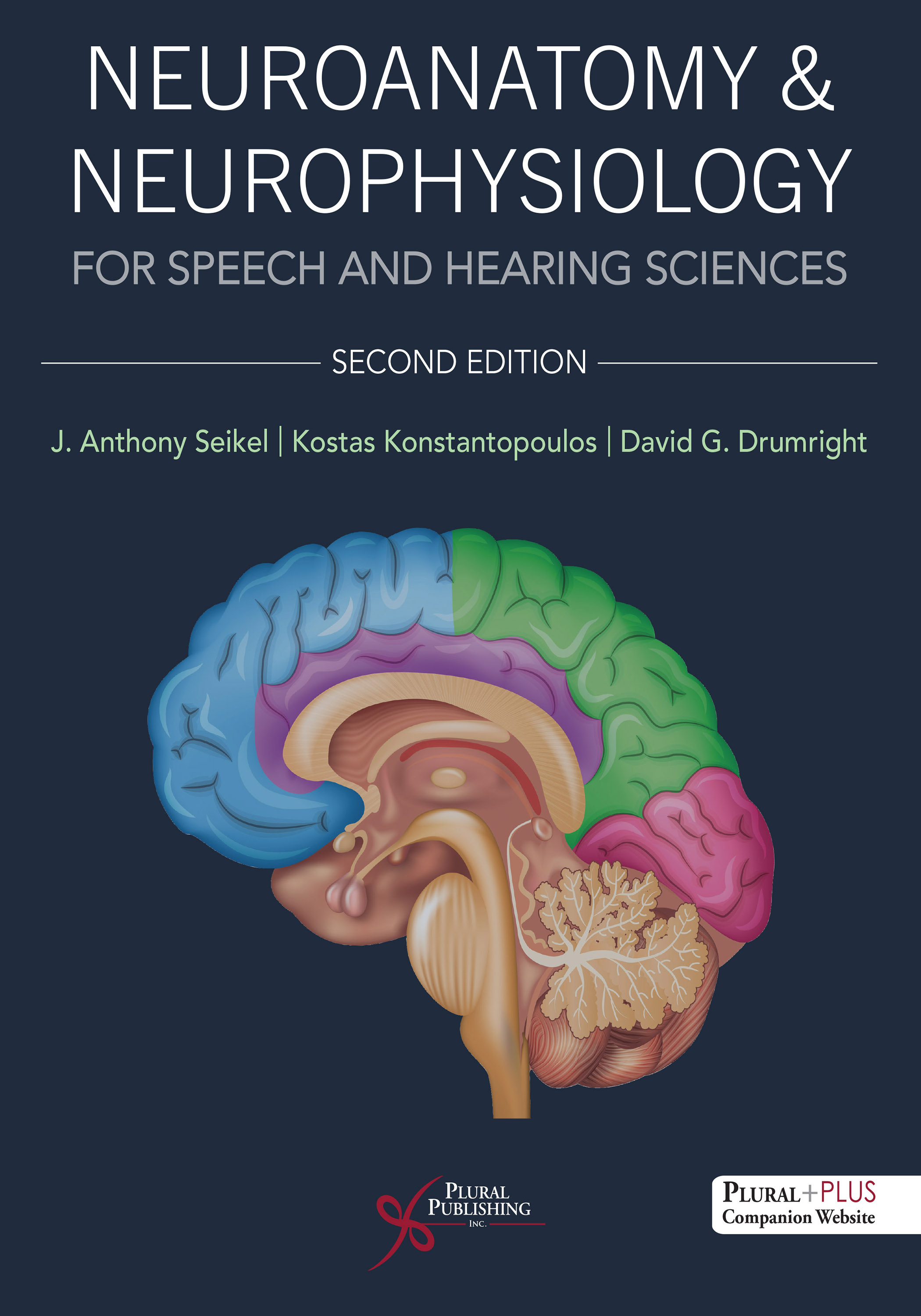
Neuroanatomy and Neurophysiology for Speech and Hearing Sciences
Second Edition
J. Anthony Seikel, Kostas Konstantopoulos, David G. Drumright
Details: 543 pages, Full Color, Hardcover, 8.5" x 11"
ISBN13: 978-1-63550-840-6
© 2027 | Available

